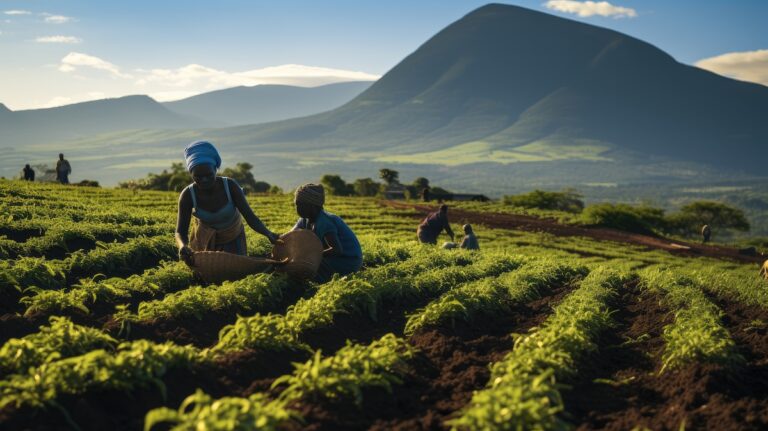Across Africa, climate change is reshaping the agricultural landscape, leaving smallholder farmers increasingly vulnerable. These farmers often lack the financial resources needed to adapt, and traditional credit systems, designed and enjoyed by those with far better access, routinely fall short. As a result, vast financial gaps persist, leaving millions without support. According to the World Bank, Africa suffers from one of the world’s largest finance gaps, with some regions seeing shortfalls as high as 88%. The challenge is especially felt by smallholder farmers who are frequently excluded from formal credit systems due to a lack of collateral, limited financial records, or geographic isolation.
To meet this challenge, microfinance and fintech firms must step up and deliver resilient, adaptive, and client-

focused solutions and systems. This means investing in strong operational foundations that withstand disruption, creating agile service delivery that responds to fast-changing needs, and prioritising the client experience as a core driver of sustainability. Microfinance firms now have the opportunity to invest in fintech and develop this shift in mindset. Now, they have the opportunity to invest in resources where technology, trust, and tailored solutions converge to help farmers build lasting resilience against climate shocks.
Building Operational Resilience from the Ground Up
For microfinance, operational resilience isn’t just about bouncing back; it’s about embedding robustness in our daily processes, from loan disbursement to data management, to ensuring continuity even in challenging environments.
Africa’s smallholder farmers need and deserve this level of operational resilience. For many, capital alone isn’t enough. What they require are adaptable, technology-based systems that meet them where they are, not where traditional financial systems demand they should be.
For too long, conventional finance has failed to serve these communities. But today’s fintech innovations are transforming service delivery by blending digital efficiency with local relevance. From mobile lending apps to drone-enabled credit assessments, financial tools can now reach even the most remote farmers with climate-smart, customised support.
These platforms enable rapid, flexible financing for critical investments, such as silage storage, terracing, and pest-control tools – resources that are essential for climate adaptation. Importantly, this innovation isn’t driven by algorithms alone. Increasingly, fintech solutions are being designed with a human-centred approach that reflects the realities of rural life. For investors and institutions alike, this shift presents a growing opportunity of investing and interacting with fintech that is both agile and inclusive.
Agile Service Delivery in a Dynamic Market
Operational focus means investing and creating flexible and responsive service delivery channels that can adapt quickly to the evolving needs of SMEs and micro-entrepreneurs, leveraging technology where possible, whilst maintaining a human touch.
As the demands of smallholder farmers and micro-entrepreneurs grow, and as climate change compounds, fintech is evolving to deliver services that are truly responsive. The integration of AI and data analytics allows financial institutions to adapt in real time, using mobile money patterns, transaction histories, and even satellite imagery to design credit products that reflect the lived realities of underserved clients.
This shift from rigid systems to dynamic, user-informed models enables service delivery to respond quickly to local conditions, whether it’s assessing risk more accurately or offering timely support when it matters most. Tools like the Pest Risk Information Service (PRISE), which combines weather data with mobile alerts, help farmers act before threats materialise. With these tools, farmers are now reporting a 109% increase in maize yields and a 70% reduction in pest damage.
The result is more than just operational efficiency. These advances show how tech-enabled delivery, paired with a human understanding of context, can create financial services that truly meet people where they are, fostering a more inclusive, climate-resilient environment.
The Client Experience as a Pillar of Sustainability
Client experience is not just a service function, but a critical operational outcome. Every interaction, from the initial application to repayment, is designed to be as seamless and supportive as possible to foster long-term relationships.
While smallholder farmers and micro-entrepreneurs have often been excluded from traditional financial systems, they still deserve a banking experience that reflects their dignity and potential. As fintech reshapes agriculture across Africa, its success hinges not only on technological innovation but on the quality of the client experience.
From the moment a farmer applies for a loan to the final repayment, it is important that every step is seamless, personalised, and supportive. This user-centred approach goes beyond just improving access to finance; it builds lasting trust and encourages the adoption of climate-smart practices that align with global goals like Zero Hunger (SDG 2) and Climate Action (SDG 13).
Farmers can now engage with financial services that understand their context, speak their language, and respond to their day-to-day realities. In this way, a system is created where improved client experience drives both resilience and impact. As global attention focuses more on planning for climate adaptation and food security, fintech’s ability to deliver intuitive, high-impact solutions will be essential.


